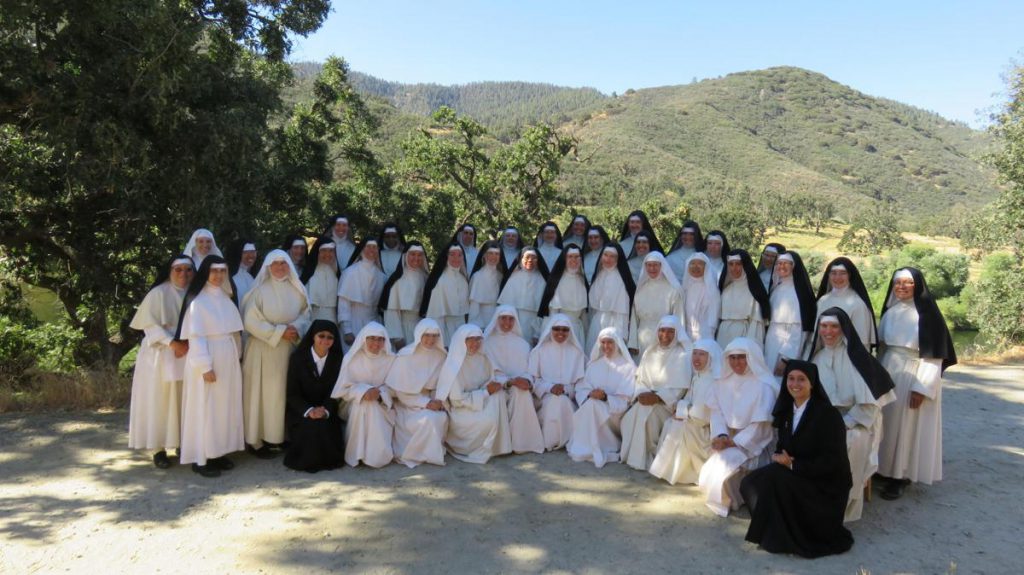
Imagine if you will a wave, like a ripple in a pond, emanating from the Tehachapi mountains in a concentric circle. The source of this wave is not an earthquake caused by tectonic movement but something even more powerful: prayer. As it flows outward and eventually envelops the world, it penetrates both the darkness and the light.
This concerted “raising of one’s mind and heart to God and the requesting of good things from God” clearly does not destroy, but just the opposite. This mystical vibration, like a heart, “pumps the sap of grace” to our fallen planet and impacts the secular blind, the spiritually lethargic, the religious myopic and even the righteous. It advocates for our eternal well-being.
Quite a force, tsunamic to my way of thinking. What is the wellspring that creates such faith? Simply put, it’s the essence of our existence, the Way, the Truth and the Life. And the nexus of this not so imaginary wave? The cloistered Norbertine Nuns of Tehachapi California, who shroud themselves in the Divine Source and strive to be part of Jesus’ Love and Work.
They do so as warrior Nuns which is not hyperbole. Their modus operandi is stealth, but you must understand that they are indeed on the front lines battling the evils of the world as soldiers of God. They are innocent as doves and cunning as serpents. They have to be, to fight the fight well. What prompts this radical vocation? They are in love with Jesus, their relentless crusade is for Him and their objective is to love as Jesus commands – for you and me and the world.
In Love – for Love – to Love.
My Objective
Let’s first start with a premise and then my objective. Premise. You either believe in a Trinitarian God and desire to do His will or you don’t. If you don’t, your particular world view will probably find the following rather out-there, medieval, superstitious, un-scientific, almost silly. But if you do believe in this great petition of Christian prayer, “Thy will be done,” you desire to unite your will to His to fulfill His plan of salvation in the life of the world.
Our province of Catholic faith starts with the here and now. But it is also beyond time and space, both supernatural and transcendental where eternity resides, and miracles are born.
Now my objective. I’m on the hunt for a miracle. The vibrant and growing community of the Norbertine Canonesses of the Bethlehem Priory of St. Joseph are running out of room. Just as, if not more important, their current twice-expanded chapel is still located in the property’s original early 1900’s ranch house, not a dwelling place intended for the worship and majesty of God. They need capital to grow, $12 million to be precise, for the construction of a chapel and additional wing to house the ever-expanding corps of Sisters.
Being faithful to their cloistered vocation, they seek to raise funds in a manner consistent with their hidden way of life, e.g., through their FirstFruits newsletters, their website and donate buttons, etc.; they do not organize or host fundraisers, or similar types of events. So, it’s incumbent upon this unworthy former Marine to tell you a little about them so you can investigate further if you choose. Then you can decide whether to help and participate with the graces of the Spirit so that the work of these remarkable Nuns can flourish.
Their story is riveting.
The Beginning
Founded with five Sisters in 1997, and the only community of cloistered canonesses within the Norbertine Order in the United States, their monastery began in the mountains of Tehachapi as a 4,000 square foot ranch house, since renovated to serve as their chapel and makeshift convent. Over the years, they lived and slept in three used modular trailers, which served as their dormitories, at one point twelve Sisters in one trailer, four in one room with bunk beds, with one bathroom per trailer. At an altitude of 5,400 feet, leaking ceilings,15-degree weather and snow and cold were occasional reminders that their extraordinary mission would always be replete with trials.
In time, they were eventually able to raise $3 million, that in itself a minor miracle, for phase one of their monastery expansion. Planned for forty-eight Sisters in 2010 when there were only twenty, it was completed in 2013. The result was 23,000 square feet with 2 1/2 stories. They could finally dispose of the trailers. Since then, they have continued to grow, and are now actually forty-three in number, with more young women desiring to enter. They may be at capacity this year.
Their most pressing need is a chapel as well as an adjoining wing where new Sisters will be roomed. This is phase two. The current chapel is a converted dining and living room in the original ranch house, twice expanded. Their projected budget is $12 million for the project, in large part due to the uneven terrain on which the tri-level chapel will be built. When I became aware of this crucial requirement, there were three relevant dimensions of their life I first wanted to explore.
Prayer
I will never decipher the mystery of our faith, none of us will, at least in the context of our material life. But I’m a believer, and I know that I’m required to live in a personal relationship with the living and true God. This relationship is called prayer. In Jesus’ life, he presents himself as our model, the perfect man, our Teacher. And through his humility he draws us to prayer because it is He who we are supposed to emulate. He is always in communication with God and often in solitude during these times of triune discourse. He removes himself from the crowds, away from the distractions and inconsequential noise. He needs to pray in the wilderness.
The other great exemplar for me regarding prayer and a committed relationship with Jesus Christ are the Sisters. Mortal like me, the comparison definitely stops there. Oftentimes my prayers need training wheels, they are a little unsteady to say the least. But do my ears hear and am I open to the spiritual depths to which God wishes to take me?
That is the key question for all of us. I struggle in this fundamental area but I’m in awe of the Norbertine Sisters who follow the Rule of St. Augustine, striving always to be of one mind and heart lifted toward God. Their ears hear, I just know it, and they are attuned to the spiritual guidance of God. They joyfully live out their canonical vocation within the monastic rhythms of liturgical prayer and contemplation, of community life and work, of silence, study and penance. And like Jesus at times, they are away from the world.
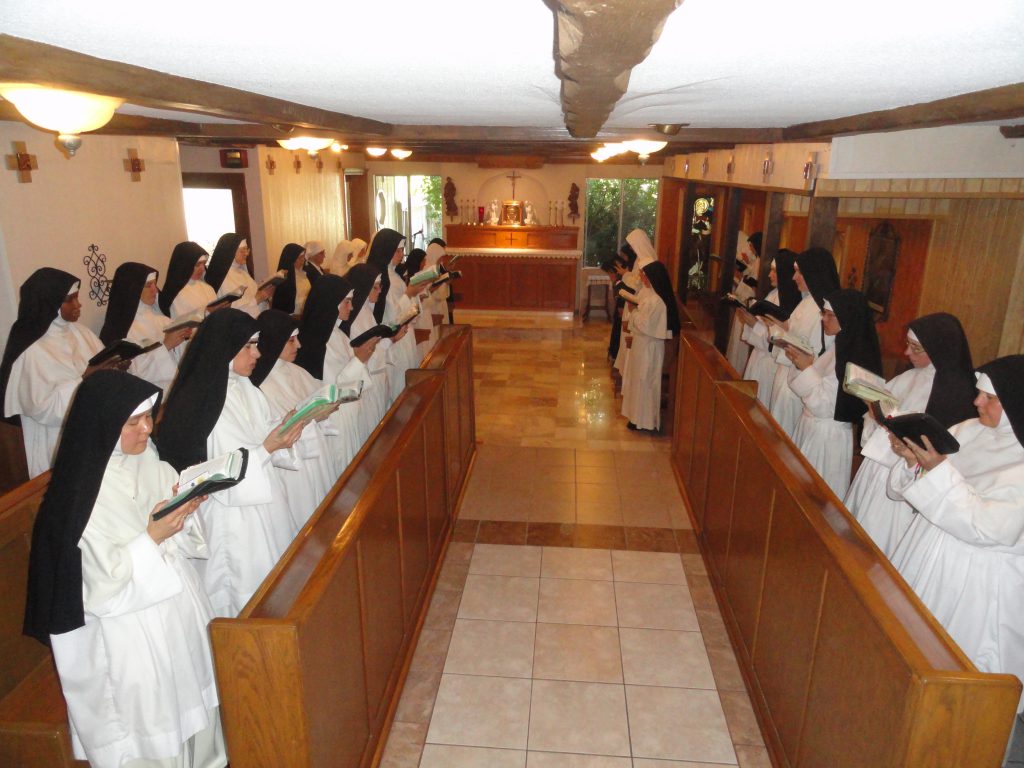
One note. Liturgical prayer has a special excellence because it is not the prayer, however sublime and elevated, of individual souls, but is the prayer that the whole Church addresses to God, in union with Jesus, her Spouse and Head. And as canonesses, the Sacred Liturgy is the raison d’etre of their life, mission and vocation.
St. Chrysostom says: “Prayer is a strong weapon, a defense, a port, and a treasure. It is a weapon sufficient to overcome every assault of the devil; it is a defense to preserve us in every danger; it is a port where we may be safe in every tempest; and it is at the same time a treasure which provides us with every good.” Every day, the Sisters live this beautiful fusion of warrior, protector, nurturer and sacred servant.
Mother Teresa wrote this about the spiritual life: “The fruit of silence is prayer. The fruit of prayer is faith. The fruit of faith is love. The fruit of love is service. The fruit of service is peace.”
Cloistered Life
Why aren’t you out there helping people, teaching, doing something? Can’t you find a man? What are you running away from? Could you possibly live a more selfish life?
This is a life that was well understood for centuries, but not any longer. The world has become secularized beyond imagination. What is prayer? Who is God? What is grace? People don’t understand the life and mission of cloistered Nuns, the eternal value of prayer and sacrifice, that each member of Christ’s Body has a role and function, and they, like St. Therese explained so well, are like the heart, pumping the sap of grace to all the members, just like the natural heart pumps the lifeblood throughout the body.
It is a radical way of life, to be sure, but one that twenty centuries have proven is one geared to bringing the soul to a deep union with God. The Sisters are not practicing a rationalist Christianity. Everything about the cloister, about their monastic cloistered canonical life of prayer and sacrifice, about their Rule and way of life, the monastic architecture, their vows of poverty, chastity and obedience, with virtually little to no compensation or consolation, is designed to bring them to the point – at a much quicker pace than you and I – where all they desire is one thing, God alone, to follow His will and carry the cross. To love Him truly with their whole heart, mind, soul and strength, and their neighbor as themselves.
St. Catherine of Siena, in her book of Dialogue with God was reproached by Him. “You cannot render me any service, but you can help your neighbor. The soul in love with my Truth gives herself no rest but searches ceaselessly to help others. You cannot give back to me myself the love I demand, but I have put you beside your neighbor so that you can do for him what you cannot do for me. What you do for your neighbor, then, I consider as being done for me.”
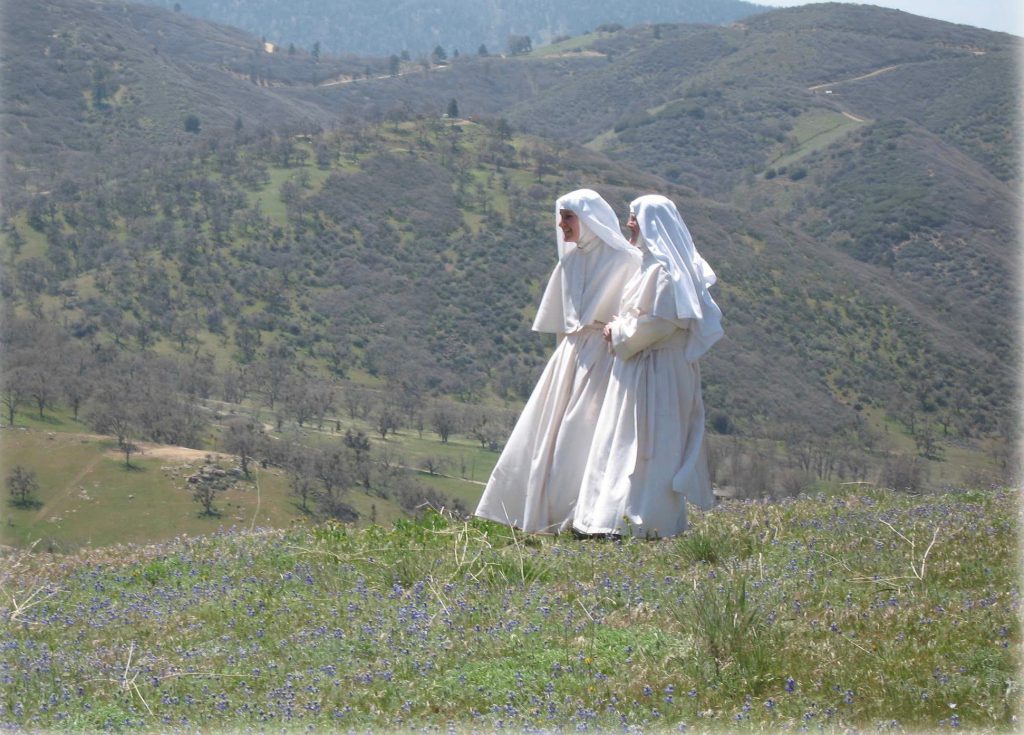
Living the true authentic cloistered Norbertine canonical monastic life is a daily challenge. They must always be on guard, just like the trained Green Beret in the midst of battle. There is no break. There is no vacation. The Trinity is always working; it is no accident that they are, too. And of course, so is the evil one. The truth is they are out there doing something, every second of the day … through their intense and serious life of prayer and sacrifice.
What do you do all day? Are the walls and locked gates to keep you in at night? Aren’t you bored? Don’t you get cabin fever? Do you feel forgotten?
The Sisters pray together as a community in choir throughout every day and night, seven to eight hours, including midnight Matins. The Worship of God in the Sacred Liturgy, the Holy Sacrifice of the Mass and the Seven Canonical Hours of the Liturgy of the Hours, is their life, duty and mission, on behalf of the Church. Latin and Gregorian chant, the official language and music of the Church, take pride of place in their daily liturgy. Their liturgy is not light, brief, or bland; it is full, rich and they strive to make it beautiful for God. They only have about four hours each day for work, study, and the like, which is done with utmost diligence by all the Sisters.
They do not leave the enclosure, it is their home for life except for doctor appointments, necessary business, and the unexpected. They perpetually abstain from meat, following in the footsteps of their holy founder, St. Norbert, and the great monastic tradition he embraced from the beginnings of their Order in the 12th century.
They strive to be increasingly self-sufficient, with gardens, a small dairy working farm with livestock and of course chickens (milk, cheese and eggs for the Sisters), as well as their various means of self-support, including their little gift shop and private guest house, making priest vestments, and their annual Christmas wreath and gift box fundraiser. They are also planning a number of other exciting endeavors and I was fortunate to see some of that preparatory work on their well-organized grounds. One couldn’t help but notice the pride in workmanship everywhere.
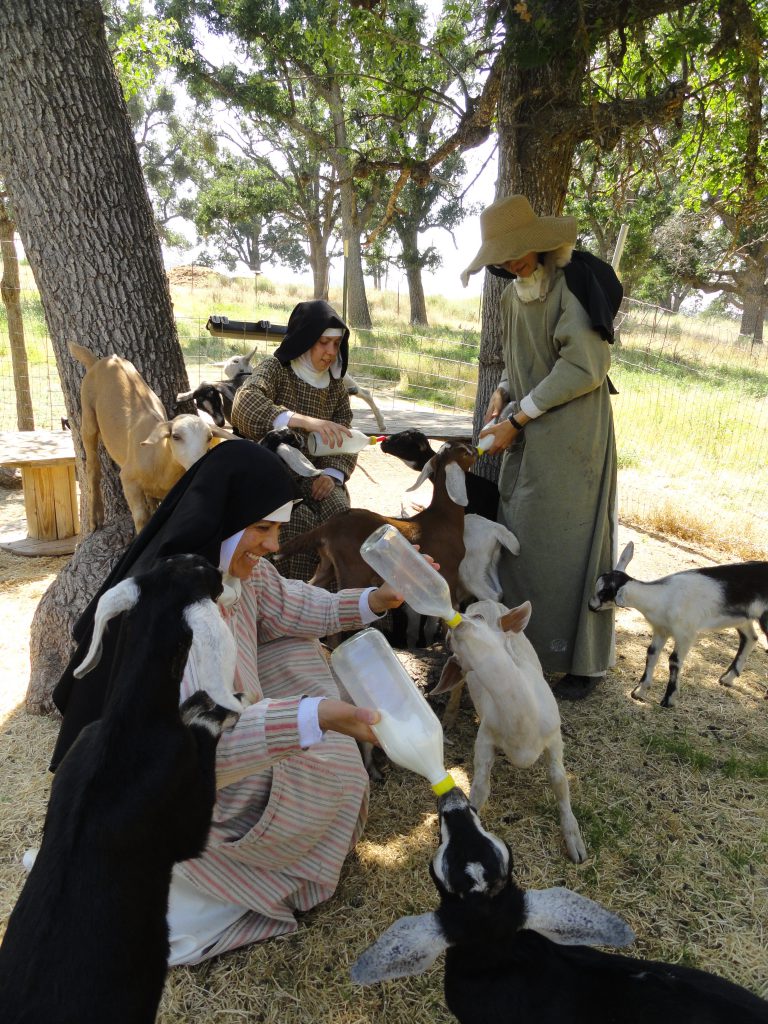
I visited their monastery because I was compelled to observe and experience and decide for myself if these women were real. One day I helped Mother and the Sisters on one of their many ongoing projects. For the hefty part of the morning and afternoon we were pounding posts, connecting fencing and constructing gates. The sisters that were involved were on the grounds before me and after me, and the work was taxing. I was baked at the end of the day and passed out for bed before 8pm. I didn’t get up for their midnight prayers. They did. Their commitment, discipline and obvious joy is nothing short of extraordinary. Marvel and DC Comics like to think they’ve cornered the market on super heroes. They’re clueless.
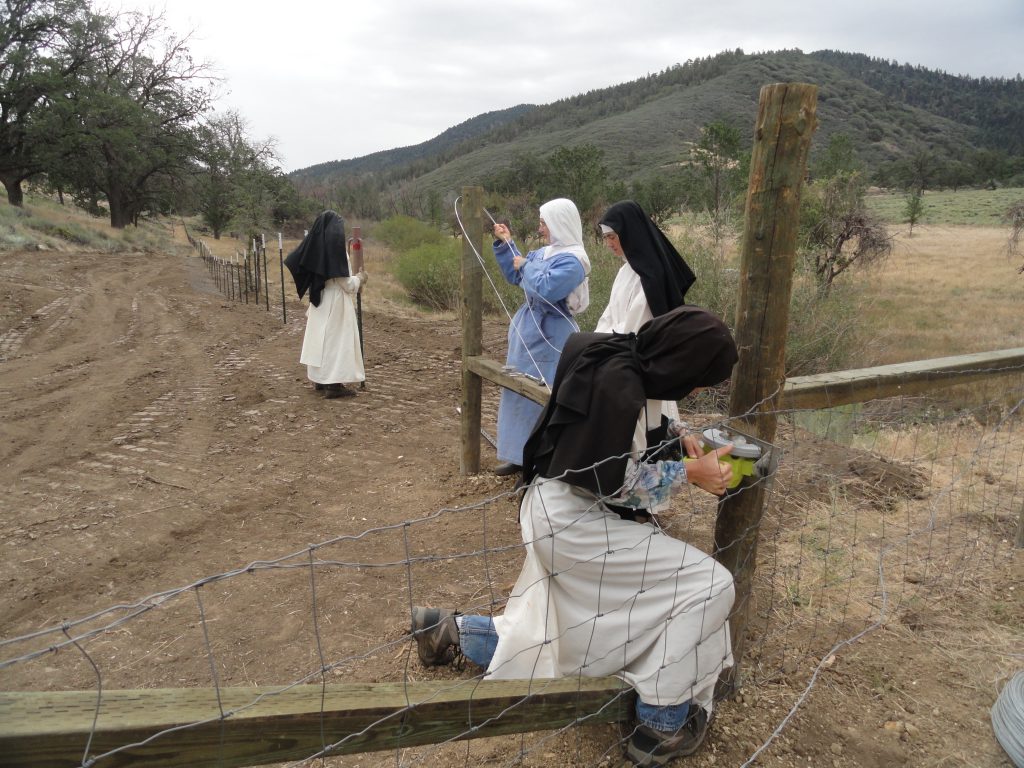
St. Teresa once said to the nuns of her convents, “I want you to be strong men. For if you do what lies in your power, the Lord will make you so strong that you will astonish men.” I think I understand St. Teresa’s point. Throughout my stay at the monastery, whether observing the Sisters in prayer or at work, I was a witness to their powerful spirit, stamina and astonishing strength of character. They are clearly women of God, in the likeness and in imitation of Mary, our Blessed Mother, whom they endeavor to emulate daily.
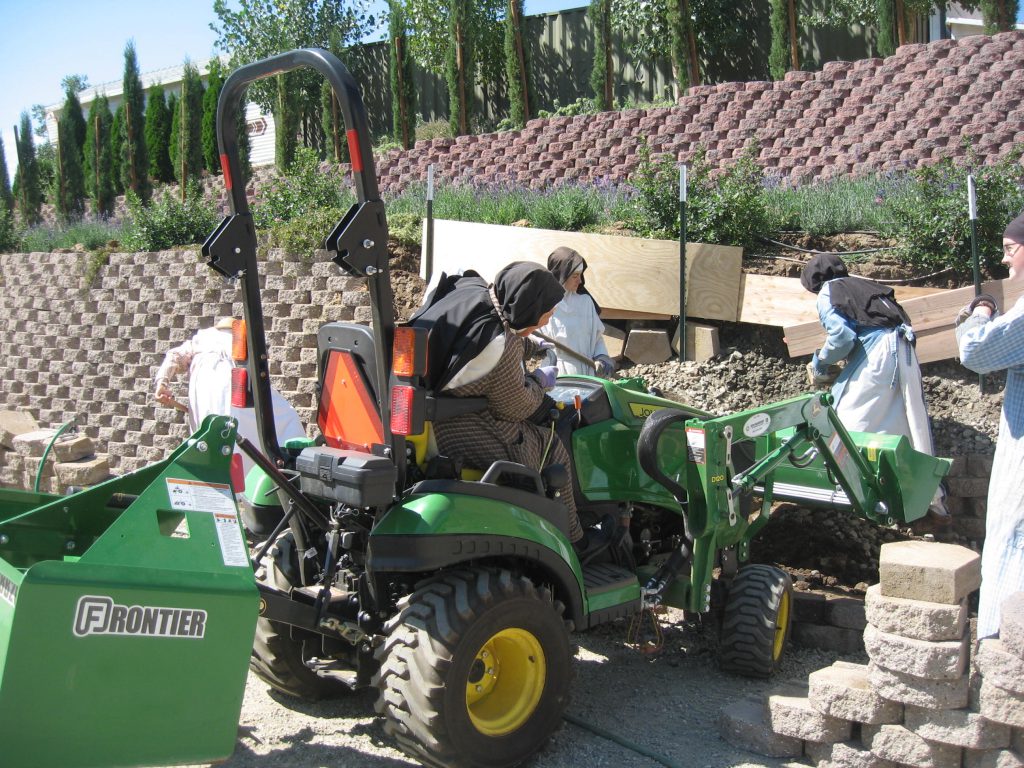
There are four women Doctors of the Church, Catherine of Siena, Teresa of Avila, Therese of Lisieux, Hildegard of Bingen. What was it about their cloistered life that would foster holiness, doctrinal insight and contemplative Catholic writing that is unique and authentic? Is their Saintly perspective something that is possible today? Perhaps at Tehachapi? Or does the mission of prayer and sacrifice (and the logistics of independence) consume all of a Sister’s waking moments?
Debi Hoppe, a dear friend of the Sisters, touched on this in an article she wrote for the Homiletic & Pastoral Review: “The body of knowledge these women contributed to the deposit of faith was made possible through their openness to God’s grace, and their steadfast practice of prayer. Their dedication to contemplation was enhanced by the grace they found in their darkness of faith, uncertainty, and many trials. They received this mystical wisdom through being receptive to the gift of contemplative prayer, being faithful to their specific mission, and keeping their gaze on Jesus through desolation, aridity, and misunderstanding. The source of the major renewals these women accomplished was not primarily through academic study, as these holy women received little formal education. Their ministry and evangelical efforts were the fruit of love, and faithfulness to our Church, and intense union with God.”
God calls us all to become saints, it is not optional: “Be ye therefore perfect, as also thy heavenly Father is perfect.” That will never change no matter the century. A saint emerging from Tehachapi is just as much a possibility today as it was with Hildegard of Germany in 1098 or with Therese of France in 1873. The sisters take this call seriously, for God’s honor and glory, and the salvation of souls.
What reinforces the Sisters’ commitment to this cloistered life of prayer and sacrifice? Is it some mystical intrinsic reward that a lay person would never understand? Is it simply the loving act of giving oneself to God? Are there answered prayers that point to subtle (or not so subtle) miracles? Is this the validation required to offset the pain, hardship and exaggerated little things that can periodically disrupt community life?
I asked these questions to Mother when I began to contemplate the Sisters’ life. She responded, “As the Little Flower said, ‘All is grace.’ Indeed, what is it that reinforces anyone’s commitment to do good, to keep vows to God, to keep vows of marriage, to keep a promise made? God, and His grace. Without Him we can do nothing; with Him, all things are possible.” I was also particularly struck by her comments, “We must deny the natural in order to receive the supernatural” and “We must die to self, self-indulgence, self-love, selfishness, self-focus, in all of its forms, in order to be open to Christ’s mystical wisdom and gifts, to those of the Holy Spirit.”
Our souls are not infinite vessels, only God is infinite, when we fill ourselves with selfish bad things there is no room for selfless good things. So, where best to empty oneself of the world’s superficiality and subordinate self to the mission of God?
Chapel
I remember walking on a trail in the redwood forests of northern California and unexpectedly began to cry (little tears because I’m supposed to be tough). It was so startling that I had to stop and think about it for a moment. Clearly, I was moved by the grandeur and beauty of the space but there was something more. I was confronted by creative genius – the colors, textures, light, shapes and composition were in perfect unity, here was one aspect of creation, I was another in conscious understanding, it screamed purpose, it was systematic, miracle sub universes of life were all around me, it all came from nothing – why was I thinking about this stuff now? Then I realized I was momentarily off the world’s treadmill and was free to explore these vicissitudes of thought. The place allowed for the serenity and exploration. I was untethered. I could be with God.
This is how I imagine the new chapel for the Sisters. “For from the greatness and beauty of created things comes a corresponding perception of their Creator.” I want them to be inspired, liberated, to grow in fraternal life, to lift their meditations even higher. The closer they are to God, the more powerful their prayers become. A chapel to turbo boost their mission of prayer seems like a very good thing. But most importantly, here the Son of God dwells in his sacramental presence. A cramped, converted ranch house is serving its purpose, but Jesus deserves so much more. Mother Angelica once remarked, “What bothers me is we’re satisfied with the very least for God, but only the best for us.”
Bishop Barron has written that “there is something unthreatening about the beautiful. Just look at the Sistine Chapel Ceiling or the Parthenon or Chartres Cathedral or Picasso’s ‘Guernica’; just read The Divine Comedy or Hamlet or The Wasteland; just watch Mother Teresa’s Sisters working in the slums of Calcutta or Rory McIlroy’s golf swing or the movements of a ballet dancer. All of these work a sort of alchemy in the soul, and they awaken a desire to participate, to imitate, and finally to share. Hans Urs von Balthasar, one of the great advocates of the aesthetic approach to religion, said that the beautiful claims the viewer, changes him, and then sends him on mission. Of course, the Eucharist is the heart and soul of the chapel, but its beauty invites one to commune. It’s hard to resist the power of the beautiful to draw you in and change you.”
I hope that the Sisters will someday be quietly rocked by the beauty of a new chapel. Detached from the world’s noisy sleight of hand – distraction – in a serene environment conducive to prayer they can find their still point, their center. Free of their own frenetic thinking they can contemplate our world and discover even greater Truth. With these discoveries, comprehending the world as it is, they can decrease in self and increase in God’s spirit. They know they are imperfect sinners, but they can get beyond themselves and enter into pure, encompassing prayer to nourish the Church and save souls.
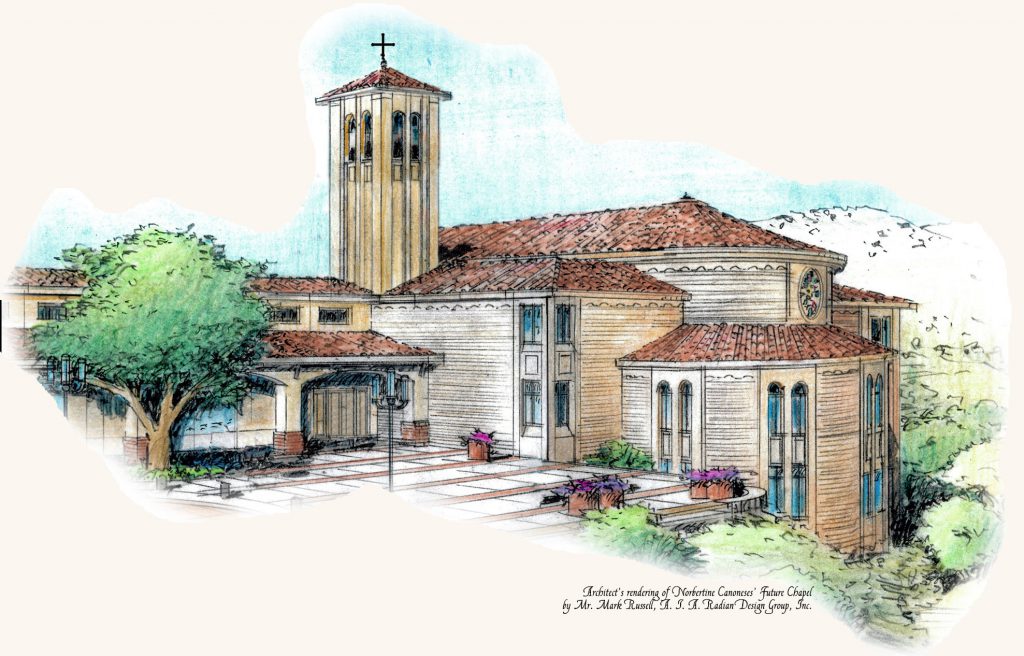
This last question is one I asked for my edification.
Why are these Nuns special?
Many religious communities are dying out. It is not a coincidence that the Norbertine canonesses are burgeoning. Women, even and especially the younger ones, are drawn to this pure, authentic and true representation and living of the Catholic faith. The added benefit is the beautiful setting in the Tehachapi mountains of silence and solitude where they can live a grounded and purpose-filled life. In my humble view, they were touched by the tsunamic faith that emanates from the monastery.

This is the first and only community of cloistered Norbertine canonesses in the United States. Canonesses may be nuns (which they are), but the canonical vocation encompasses something more, as not all nuns are canonesses. In fact, few are. Nuns (like the Dominicans, Franciscans, Benedictines, Carmelites, etc.) of the ancient tradition are all devoted to prayer, and must participate in daily Mass and recite the Divine Office. But only Norbertine canonesses have the solemn and reverential celebration of the Sacred Liturgy together in choir as the core, center and heart of their vocation, being officially designated by the Church and their Constitutions for this purpose. One might assert that they, as Norbertine canonesses, are daughters of the Church in its fullest sense, for the Sacred Liturgy, that is, Holy Mass and the Divine Office, are the official public prayer of the Church.
This is out of left field but Jack Nicholson’s famous monologue in A Few Good Men made me think of the Sisters (gotta love Marine references). I’ve tweaked it for my purposes.
“People, we live in a world that has walls. Those walls are built on a foundation of secularization, narcissism, and the diminution of God. The abhorrent mortar that holds it together reeks of distraction, family disintegration, a toxic and throwaway culture, a celebrated abortive mindset, and a relativism that distorts Truth. Listen to me! The only way those walls can be dismantled is with prayer and sacrifice. Who’s gonna do it? You? Me? The Sisters have a greater responsibility than I can only possibly fathom. The world minimizes their role. You would rather not think about them. You have that luxury. You have the luxury of not knowing what I know in my core: their mission serves the needs of our Church, the very body of Christ, and saves souls. I know you want the truth. Because deep down, in places you don’t talk about at polite socials, you want them attacking that wall. You need them crushing that wall. We use words like ‘faith’, ‘hope’, ‘love’, ‘charity’. We use these words as the backbone of our life as Christians. Do we mean them? Or, do we have a spine of ambivalence?”
Jack can be a little in-your-face, but I see his point. Please help our Nuns. Let’s give them a chapel worthy of our Church’s Heart. Please donate or contact them direct. And of course, the Sisters love and cherish your prayer requests. One last comment. My weekend with the Sisters was a profound one on so many levels. If at all possible, visit their site, learn about them and invite them into your lives. God bless all of you.
**Photos courtesy of the Norbertine Canonesses of Tehachapi**

5 comments
[…] The Remarkable Growth of a Community of Norbertine Canonesses […]
[…] – Disrupt with stealth, guerrilla tactics – I’ve written previously about The Hidden Warrior Nuns of Tehachapi, more specifically the Norbertine Canonesses of the Bethlehem Priory of St. Joseph. They are […]
[…] dedicated email: pray_req@cybersurfers.net. Additionally, you can read about them here and here if you’re […]
[…] I need to support them. For more background, you can read about these extraordinary women here and […]
May God bless and support this community of Nuns building a large Monastery and housing all of these beautiful women called by God to the community.
Please support and work with prayer and funding. We need these prayer warriors in the world today. I missed all the chaos especially here in California.
May the Holy Spirit lead each of us to support through prayer and means these brides of Christ. Your gift, small or large will be precious to the world.
At the foot of the Cross,
Carol